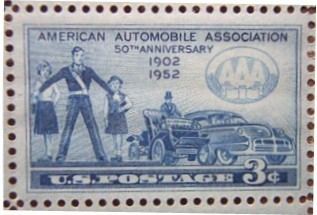 | ||
Junior safety patrol is a voluntary group of crossing guards involving older students helping younger students cross streets in elementary and middle schools across the United States. The official School Safety Patrol program was organized in 1920 by the American Automobile Association.
Contents
As of 1995, safety patrol members were located in 76 percent of the communities across the United States. AAA clubs across the United States and Canada sponsor the 500,000 member safety patrol program in 50,000 schools. Local AAA clubs supply training materials, badges and other materials, including the orange or neon green Sam Browne belt, needed to organize and operate a school safety patrol program.
Former safety patrol members include U.S. Presidents Jimmy Carter and Bill Clinton; Dr. Gary S. Becker, Nobel Prize-winning economist; U.S. Senator John Warner; former Michigan Governor William Milliken; Joe Garagiola, member of the Baseball Hall of Fame; Lee Iacocca, former Chairman of the Chrysler Corporation, and; Chief Justice Warren E. Burger, along with 21 astronauts.
About
In many towns and cities across the United States today, the official School Safety Patrol program is operated as a partnership between local police departments, local government departments of transportation engineering, local school districts, and local chapters of the American Automobile Association.
Today, generally, each school that has a junior safety patrol provides either a staff member or parent volunteer who organizes and supervises the junior safety patrol. Members of the patrol take a post at school crossings and work to ensure the safety of fellow students. School staff or members of the local police department may provide training, safety lectures, and an ongoing enforcement effort in areas surrounding schools. School staff or parent volunteers may provide direct supervision and support, while equipment for the safety patrol is provided by the local chapter of the American Automobile Association at a reduced cost or for free
History
Early, the role of students in the junior safety patrol was to "teach safety and role model it." Student members were taught to "direct children, not traffic," as they had authority over the students as they crossed streets, but did not have any authority over vehicular traffic on the streets.
With the rising use of automobiles and the attendant concerns for the well-being of students as they walked to school, the Chicago Motor Club pioneered the concept of School Safety Patrols in 1920. In 1921, St. Paul, Minnesota was one of the first cities in the nation to start a school safety patrol. Sergeant Frank Hetznecker, head of the St. Paul School Police, introduced Sam Browne belts to the school police. Sam Browne belts are buckled around the waist and shoulder, and the school police attached badges to them. They have become a marker of the school patrol and are commonly issued to participants across the united States. The Omaha Police Department in Omaha, Nebraska instituted one of the first safety patrols in the United States in 1923. The Junior Safety Patrol was instituted in Seattle, Washington in 1928, with Seattle Police Department Captain George W. Kimball organizing the city's Junior Safety Patrol movement, and serving as director from 1928 to his death in 1961.
The junior safety patrol movement took hold in the 1930s under the sponsorship of the American Automobile Association. In 1930 a Seattle rally brought together more than 1,000 members. Yearly rallies began in 1931 in Washington, D.C., culminating in the National School Patrol Parade. The 1936 rally had more than 7,000 participants who marched on the United States Capitol. The next year had more than 11,000 participants.
Members of the Safety Patrol were originally all males and called "patrol boys". They were formally identified by either a badge or a white cloth Sam Browne belt, later replaced by an orange reflector vest or orange Sam Browne belt.
